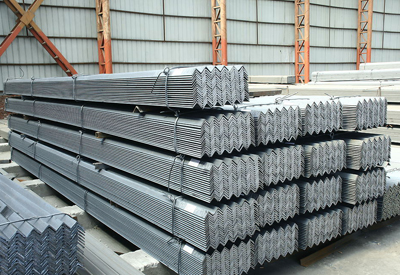[Fellow]European Commission announced that EU is prolonging for three additional years the safeguard measure currently in place on imports of certain steel products.
 [Ferro-Alloys.com]European Commission announced that EU is prolonging for three additional years the safeguard measure currently in place on imports of certain steel products. The prolongation will apply from 1 July 2021. The safeguard measure takes the form of Tariff-Rate-Quotas reflecting traditional trade flows from third countries, above which a 25% duty is levied on imports. The EU steel safeguard will, in principle, be prolonged by three additional years from 1 July 2021 to 30 June 2024, with an automatic annual liberalisation of 3%. There are three periods envisioned: from July 1, 2021 to June 30, 2022, from July 1, 2022 to June 30, 2023 and from July 1, 2023 to June 30, 2024. The safeguard can also be reviewed every year after the first year. The extended safeguard would apply to the same products as it does now.
[Ferro-Alloys.com]European Commission announced that EU is prolonging for three additional years the safeguard measure currently in place on imports of certain steel products. The prolongation will apply from 1 July 2021. The safeguard measure takes the form of Tariff-Rate-Quotas reflecting traditional trade flows from third countries, above which a 25% duty is levied on imports. The EU steel safeguard will, in principle, be prolonged by three additional years from 1 July 2021 to 30 June 2024, with an automatic annual liberalisation of 3%. There are three periods envisioned: from July 1, 2021 to June 30, 2022, from July 1, 2022 to June 30, 2023 and from July 1, 2023 to June 30, 2024. The safeguard can also be reviewed every year after the first year. The extended safeguard would apply to the same products as it does now.
The Commission has reviewed the functioning of the measure twice in October 2019 and July 2020. Following a duly substantiated request by 12 EU Member States, the Commission launched an investigation in February 2021 to assess whether to prolong the steel safeguard beyond June 30, 2021. In accordance with the requirements under EU and WTO rules, the Commission found in its investigation that the safeguard measure continues to be necessary to prevent or remedy serious injury to the EU steel industry, and that the EU industry is adjusting to a market situation in the EU with higher level of imports.
The Commission will closely monitor the prolongation and will review it to ensure that it remains limited to the strict minimum, is adapted to the evolution of the market, and is in line with the overall interest of the EU. This will allow the Commission to change the functioning of the safeguard measure as necessary. In line with WTO rules, the duty-free import quotas of steel will also be increased by 3% annually. The Commission will also initiate a review if the US introduces significant changes to its ‘Section 232’ measure on steel.
The EU steel safeguard extension was voted upon by EU Member States on 18 June 2021. WTO members were notified of the proposed extension on 11 June 2021. The Implementing Regulation was published on 28 June 2021.
The European Commission introduced these restrictions from February 2, 2019 to June 30, 2021. On July 19, 2018, as part of an earlier investigation into metal products, the European Commission introduced quotas for imports of metal products with a 25% duty on volumes in excess of the quota.
The objective of safeguards is to give the industry a temporary breathing space to make necessary adjustments and safeguards always come with an obligation to restructure. Unlike anti-dumping and anti-subsidy measures, safeguards do not focus on whether trade is fair or not, so the conditions for imposing them are more stringent. So far, safeguards have only been used sparingly by the EU.
Imports may also be subject to surveillance if the trend of imports of a product threatens to cause injury to EU producers. Surveillance does not restrict imports, it is a system of automatic import licensing over a limited time, either retroactively or in advance. As of 15 May 2020 the prior surveillance regime has been replaced by a monitoring system.
Tariff quotas, both individual and global, operate on a quarterly basis of distribution. The mechanism for transferring unused quotas from the previous quarter to the next is also preserved and countries will receive access to the under-selected quotas of the previous quarter on the 20th working day of the new quarter. The mechanism is in force within one period exclusively, and the volumes of tariff quotas that were not selected in the last quarter of the previous period are not carried over to the next period. It is also possible to use the global tariff quota in the fourth (final) quarter of each period (i.e., from April 1, 2022 to June 30, 2022, from April 1, 2023 to June 30, 2023 and from April 1, 2024 to June 30, 2024 years) by countries that have exhausted the individual tariff quota, but with the preservation of the already existing access regimes.
Ban on use - Countries that have exhausted the individual tariff quota are deprived of the right to use the global tariff quota in the last quarter of each period.
Access restriction - The maximum allowed volumes of access to the global tariff quota in the fourth quarter of the period for countries that have exhausted the individual tariff quota are set. At the same time, the indicated volumes are common for all countries that have exhausted the individual tariff quota, and are used according to the first come first served principle.
Full access - Without any restrictions
source:SteelGuru Business News
Copyright © 2013 Ferro-Alloys.Com. All Rights Reserved. Without permission, any unit and individual shall not copy or reprint!
 [Ferro-Alloys.com]European Commission announced that EU is prolonging for three additional years the safeguard measure currently in place on imports of certain steel products. The prolongation will apply from 1 July 2021. The safeguard measure takes the form of Tariff-Rate-Quotas reflecting traditional trade flows from third countries, above which a 25% duty is levied on imports. The EU steel safeguard will, in principle, be prolonged by three additional years from 1 July 2021 to 30 June 2024, with an automatic annual liberalisation of 3%. There are three periods envisioned: from July 1, 2021 to June 30, 2022, from July 1, 2022 to June 30, 2023 and from July 1, 2023 to June 30, 2024. The safeguard can also be reviewed every year after the first year. The extended safeguard would apply to the same products as it does now.
[Ferro-Alloys.com]European Commission announced that EU is prolonging for three additional years the safeguard measure currently in place on imports of certain steel products. The prolongation will apply from 1 July 2021. The safeguard measure takes the form of Tariff-Rate-Quotas reflecting traditional trade flows from third countries, above which a 25% duty is levied on imports. The EU steel safeguard will, in principle, be prolonged by three additional years from 1 July 2021 to 30 June 2024, with an automatic annual liberalisation of 3%. There are three periods envisioned: from July 1, 2021 to June 30, 2022, from July 1, 2022 to June 30, 2023 and from July 1, 2023 to June 30, 2024. The safeguard can also be reviewed every year after the first year. The extended safeguard would apply to the same products as it does now.


 Save
Save Print
Print Daily News
Daily News Research
Research Magazine
Magazine Company Database
Company Database Customized Database
Customized Database Conferences
Conferences Advertisement
Advertisement Trade
Trade




 Online inquiry
Online inquiry Contact
Contact

Tell Us What You Think